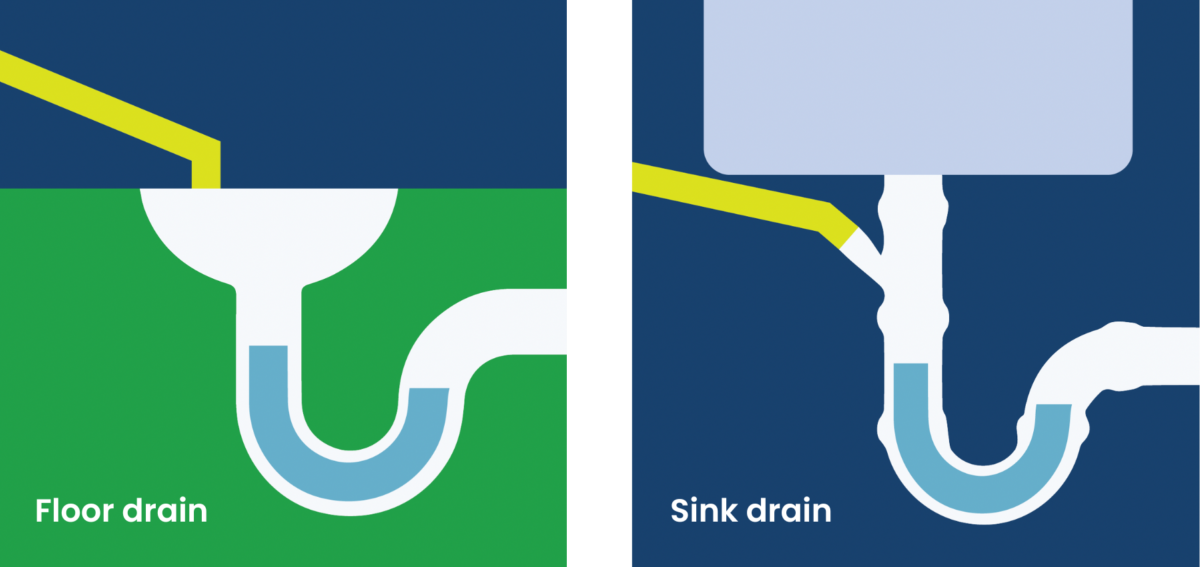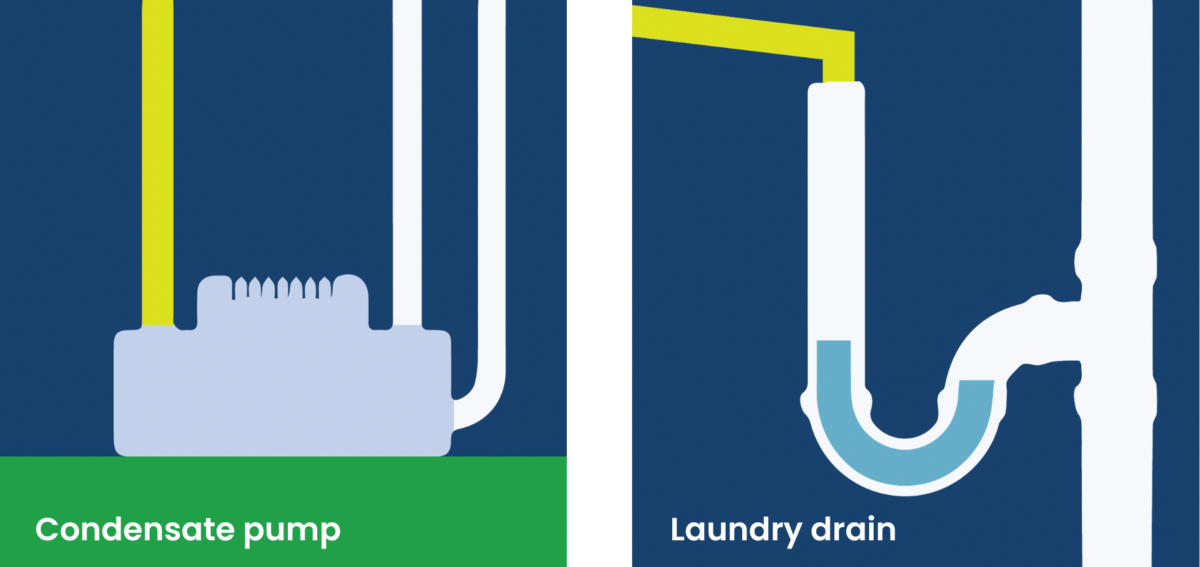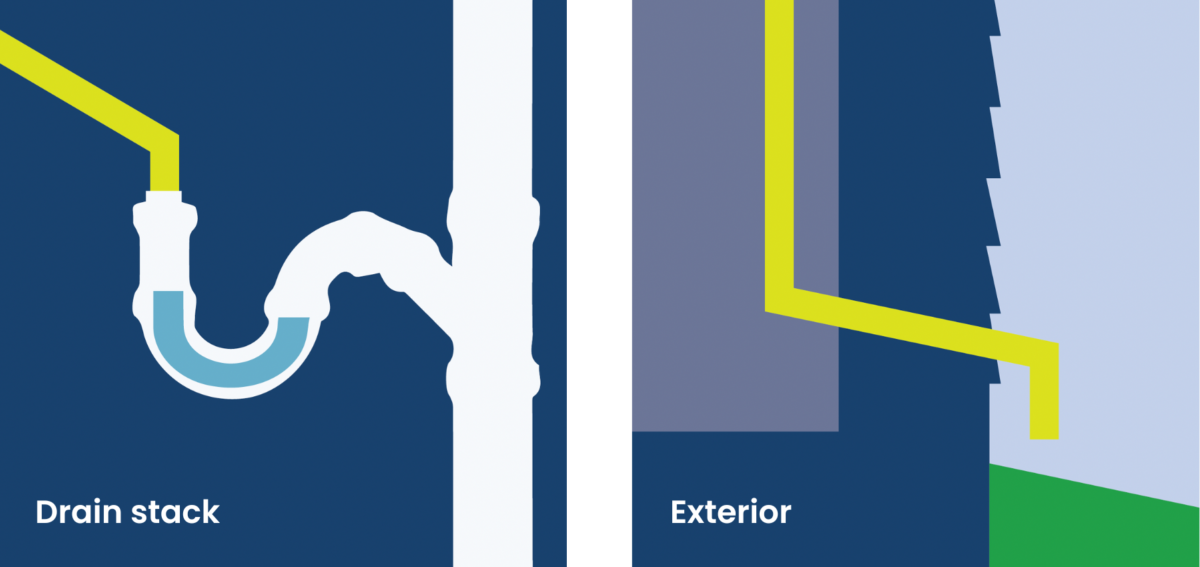Heat pump water heaters produce a benign condensate as they extract heat and moisture from the surrounding air. If you’re replacing an existing heat pump or condensing gas-fired water heater, you can use the existing drain system to handle the condensate. For new homes, or replacing an electric resistance water heater, you’ll need to find somewhere to drain it. The most common and convenient options are outlined here.
No matter what option you choose, remember that it’s best to have a continuous downward slope on your condensate line to avoid standing water. Since it’s a gravity drain, no part of the line can be higher than the condensate outlet on the water heater. If you’re connecting to the home’s plumbing system, make sure there’s no risk of backflow up the condensate line and that there’s a water trap to prevent dangerous sewer gases from entering the home.
Always follow applicable code and manufacturer instructions.

If there’s a floor drain near the water heater, it makes an excellent condensate drain. Some floor drain covers are specifically designed for connecting condensate tubing. Secure and route the tubing to minimize trip hazards.
Using an appropriate wye fitting, condensate can be drained into a sink’s drain assembly. The water heater’s condensate port must be higher than the sink brim, and the connection needs to be made on the sink side of the P trap.

If the water heater is installed near an existing condensate pump (for an air conditioner, for example) the water heater can also drain its condensate to the pump.
Water heater condensate can share a drain with a clothes washer—whether that be an open stand pipe, a laundry connection box, or a utility sink basin. Some connection boxes are specifically designed for connecting condensate tubing.

Condensate can be drained into any drain stack with the proper connection. Ensure there is an appropriate water trap and backflow prevention.
Condensate can drain outdoors to a spot that can sufficiently absorb and dissipate the water. In many climates, precautions against freezing—such as heat tape—are needed. Seal the protrusion well to preserve the home’s insulative properties.
Download the PDF